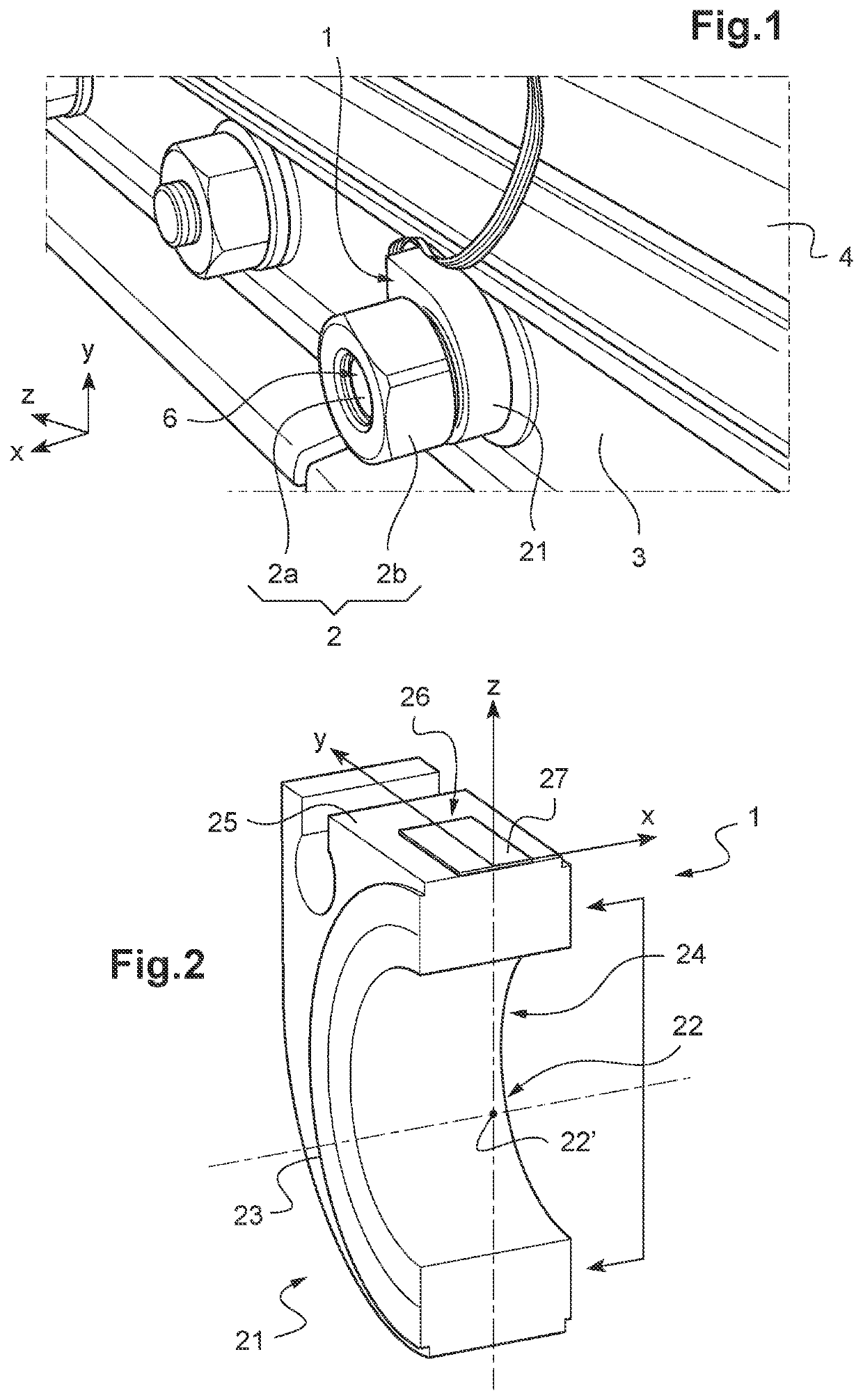Sensor for measuring a tightening force applied on a screw-assembly member
a technology of screw assembly and sensor, which is applied in the direction of screw, load-modified fasteners, instruments, etc., can solve the problems of high manufacturing cost and relatively large electricity consumption, and achieve the effect of optimizing energy consumption and low manufacturing cos
- Summary
- Abstract
- Description
- Claims
- Application Information
AI Technical Summary
Benefits of technology
Problems solved by technology
Method used
Image
Examples
Embodiment Construction
[0032]FIGS. 1 to 4, referring to one and the same embodiment, will be discussed simultaneously.
[0033]A sensor 1 makes it possible to measure a tightening force applied to a screw-assembly member 2.
[0034]Here, the screw-assembly member 2 comprises a threaded rod 2a on which a nut 2b is screwed.
[0035]In this embodiment, the threaded rod 2a is coupled to a railway rail 4. For example, a nut (not shown) is screwed onto a free end of the threaded rod 2a so as to be able to retain the threaded rod in abutment against the rail 4 while another nut 2b is being tightened at another free end.
[0036]The threaded rod 2a passes through a fishplate 3 installed against an edge of the rail 4 and receives at the other free end 6 a nut 2b in respect of which it is desired to measure a tightening force.
[0037]The sensor 1 comprises a ring 21 fitted over the threaded rod 2a and having an orifice 22 of substantially circular shape. In this embodiment the orifice 22 has a diameter of 28 mm, but it can have ...
PUM
| Property | Measurement | Unit |
|---|---|---|
| diameter | aaaaa | aaaaa |
| tightening force | aaaaa | aaaaa |
| distance | aaaaa | aaaaa |
Abstract
Description
Claims
Application Information
 Login to View More
Login to View More - R&D
- Intellectual Property
- Life Sciences
- Materials
- Tech Scout
- Unparalleled Data Quality
- Higher Quality Content
- 60% Fewer Hallucinations
Browse by: Latest US Patents, China's latest patents, Technical Efficacy Thesaurus, Application Domain, Technology Topic, Popular Technical Reports.
© 2025 PatSnap. All rights reserved.Legal|Privacy policy|Modern Slavery Act Transparency Statement|Sitemap|About US| Contact US: help@patsnap.com


